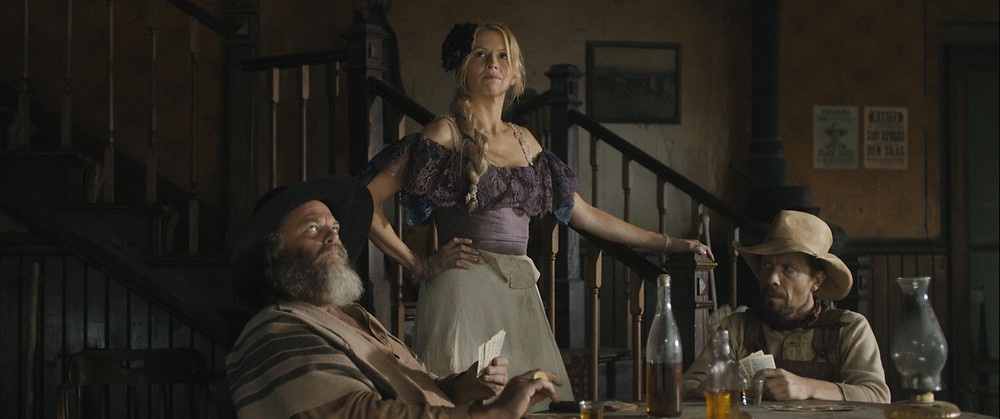The Gunfighter (Eric Kissack, 2014) is an 8 minute long short film that follows a group of characters in a western tavern that are tormented and taunted by a mysterious, hidden narrator who knows a surprising amount about them. The film is predominantly a comedy, as the various truths revealed lead to a comedic scenario and an unlikely situation that mimics classic spaghetti westerns in a format that is slapstick in nature.
I liked the fast pace of the film, which sets up its simple but interesting plot within around 30 seconds, from where events quickly unfold and escalate. The camera movements are sharp and fast, bringing the audiences attention to who and what is important quickly, and the use of the narrator, while a comedic and reflexive device that mocks the cliche here, also conveys information to the audience, but progresses the plot as-well, which is something a narrator does not typically do. This interesting technique and the effective pace of the film sticks with me after watching it a few times. This is created through sharp, snappy dialogue and fast shot-reverse-shots between increasingly aggravated characters, and this can be seen in action when all the characters draw their weapons towards the climax of the film.
The characters are one dimensional, and are also quickly established through the narrator’s information. The time and place is immediately established through mise-en-scene and cliche soundtrack, that establishes to the audience the fact that the film is self aware and mocks the cliches of the westerns it mimicked here. The plot escalates to a climax, rising and falling in intensity throughout as more characters, relationships and truths are revealed, and the plot is resolved through the climax, in which everyone dies. All important information, the crisis, context, humour, characters, conflict and set up are all established through the narrator, who is also an important character and plot point in the film. This shows the usefulness of a narrator for giving information directly to the audience in a short amount of time without having to imply or create meaning through key elements of film form or representation, aesthetics, etc. The film also demonstrates how cinematography can be used to convey information quickly and keep the audience constantly focused on what is most important in a particular moment, creating a pace that fits into a short time frame and how to effectively build up to a climax in 8 minutes with pacing, cinematography and the rapid revealing of information that progresses the plot through narration.

You must be logged in to post a comment.